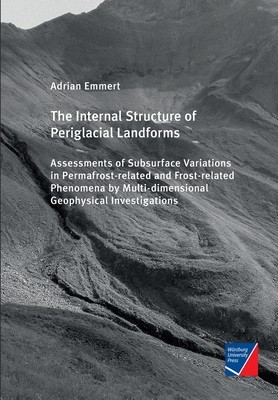
- We will send in 10–14 business days.
- Author: Adrian Alexander Emmert
- Publisher: Würzburg University Press
- ISBN-10: 3958261388
- ISBN-13: 9783958261389
- Format: 17 x 24.4 x 1 cm, minkšti viršeliai
- Language: English
- SAVE -10% with code: EXTRA
The Internal Structure of Periglacial Landforms (e-book) (used book) | bookbook.eu
Reviews
Description
Periglacial environments are facing dramatic changes. Warming air temperatures and strong snow cover variations fundamentally affect landforming processes in this hotspot region of Climate Change. But before we can assess the response of landform development to a changing climate, we need to enhance our understanding of the internal structure of those landforms. Within this study, a broad scope of landform types from alpine and subarctic regions is investigated: rock glaciers, solifluction lobes, palsas and patterned ground. By using the geophysical methods 2-D and 3-D ERI, as well as GPR surveying, structural differences and similarities between landform units of different or the same landform types are highlighted. This enables a reconstruction of their past and a projection of their future development.
EXTRA 10 % discount with code: EXTRA
The promotion ends in 23d.10:14:48
The discount code is valid when purchasing from 10 €. Discounts do not stack.
- Author: Adrian Alexander Emmert
- Publisher: Würzburg University Press
- ISBN-10: 3958261388
- ISBN-13: 9783958261389
- Format: 17 x 24.4 x 1 cm, minkšti viršeliai
- Language: English English
Periglacial environments are facing dramatic changes. Warming air temperatures and strong snow cover variations fundamentally affect landforming processes in this hotspot region of Climate Change. But before we can assess the response of landform development to a changing climate, we need to enhance our understanding of the internal structure of those landforms. Within this study, a broad scope of landform types from alpine and subarctic regions is investigated: rock glaciers, solifluction lobes, palsas and patterned ground. By using the geophysical methods 2-D and 3-D ERI, as well as GPR surveying, structural differences and similarities between landform units of different or the same landform types are highlighted. This enables a reconstruction of their past and a projection of their future development.


Reviews